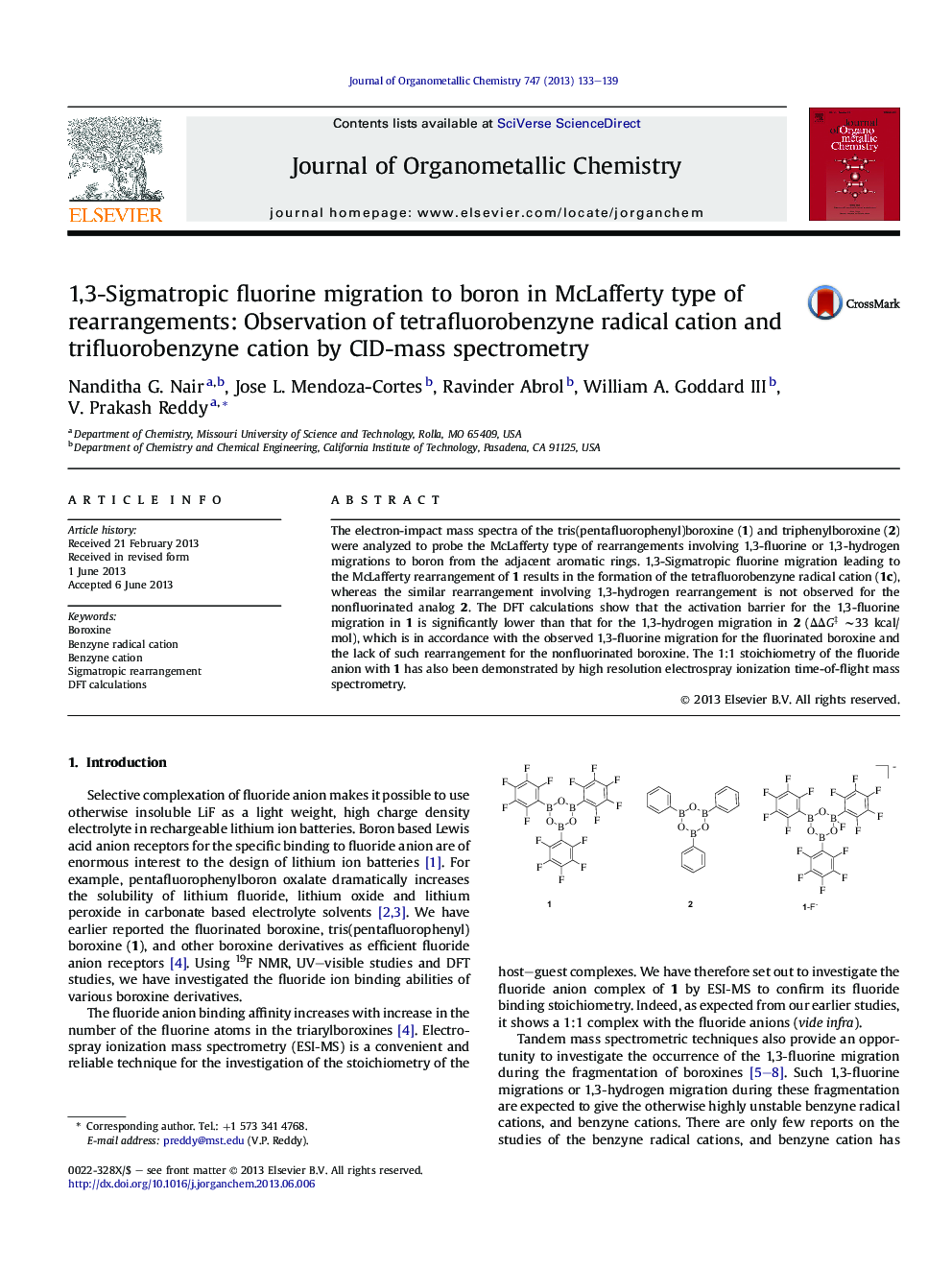| Article ID | Journal | Published Year | Pages | File Type |
|---|---|---|---|---|
| 1323680 | Journal of Organometallic Chemistry | 2013 | 7 Pages |
•First 1,3-sigmatropic fluorine migration leading to the McLafferty type of rearrangement.•High resolution mass spectrum for the fluoride–boroxine complex.•CID mass spectrometry of tetrafluorobenzyne radical cation.•DFT calculations of activation barriers for the sigmatropic rearrangements.
The electron-impact mass spectra of the tris(pentafluorophenyl)boroxine (1) and triphenylboroxine (2) were analyzed to probe the McLafferty type of rearrangements involving 1,3-fluorine or 1,3-hydrogen migrations to boron from the adjacent aromatic rings. 1,3-Sigmatropic fluorine migration leading to the McLafferty rearrangement of 1 results in the formation of the tetrafluorobenzyne radical cation (1c), whereas the similar rearrangement involving 1,3-hydrogen rearrangement is not observed for the nonfluorinated analog 2. The DFT calculations show that the activation barrier for the 1,3-fluorine migration in 1 is significantly lower than that for the 1,3-hydrogen migration in 2 (ΔΔG‡ ∼33 kcal/mol), which is in accordance with the observed 1,3-fluorine migration for the fluorinated boroxine and the lack of such rearrangement for the nonfluorinated boroxine. The 1:1 stoichiometry of the fluoride anion with 1 has also been demonstrated by high resolution electrospray ionization time-of-flight mass spectrometry.
Graphical abstractThe 1,3-sigmatropic fluorine migration leading to the McLafferty rearrangement of tris(pentafluorophenyl)boroxine 1 results in the formation of the tetrafluorobenzyne radical cation 1c, whereas similar rearrangement involving 1,3-hydrogen rearrangement is not observed for the nonfluorinated analog, triphenylboroxine 2. The DFT calculations corroborate these results.Figure optionsDownload full-size imageDownload as PowerPoint slide
